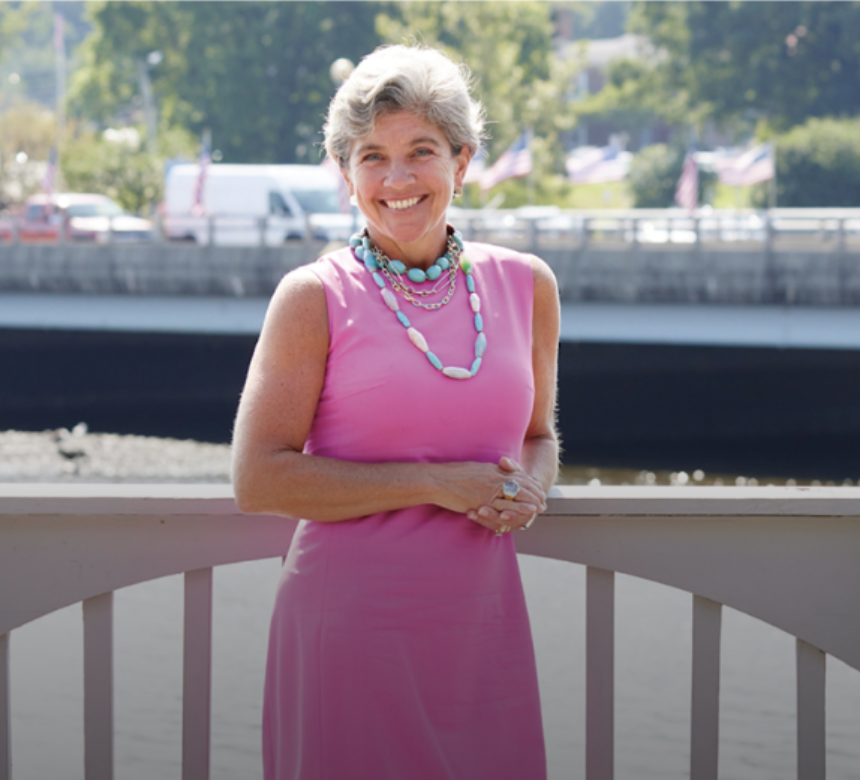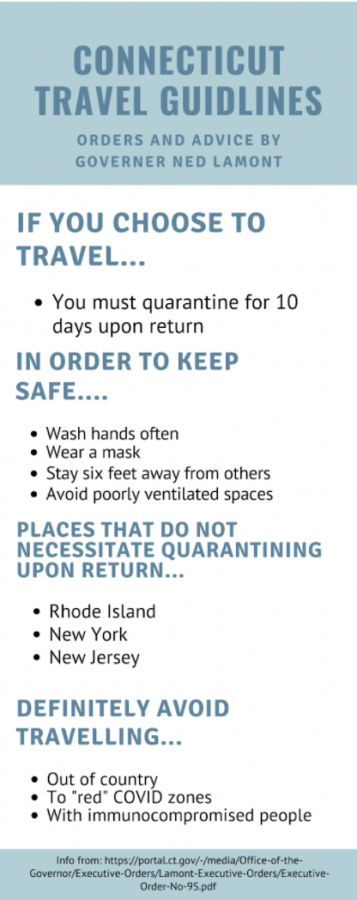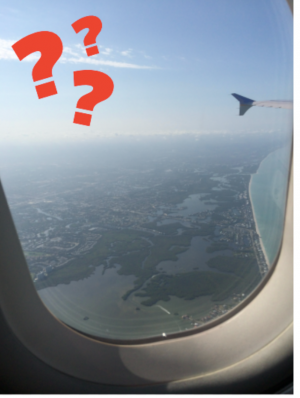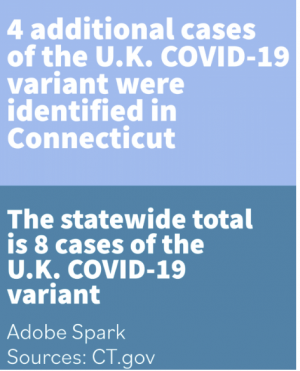Post-December break COVID surge warrants more urgent February break protocols
Infographic by: Chloe Murray ’22
It is important to try to refrain from travelling during the pandemic to reduce surges in COVID-19. However, if people choose to travel during February break, Governor Lamont’s guidelines attempt to ensure utmost safety on and after a trip.
From December 8-22, three Staples students reported positive COVID-19 cases to the administration. From Jan. 3-17, 17 positive cases were reported*.
Students traveling and spending non-socially-distanced time with friends and family during school recesses can put students and staff at risk upon return, as the district saw after December break. Thus, Staples administration is doing all they can in urging students to follow the Centers for Disease Control and Prevention (CDC) guidelines in the upcoming February break.
“Schools can offer guidance, but ultimately it is up to the family and individual to follow that guidance and adhere to the executive orders from the Governor,” School Nurse McGrath said.
The CDC directs people to wear a mask, stay six feet away from others, avoid crowds, avoid poorly ventilated spaces, wash one’s hands and monitor one’s health often, clean and disinfect and, when it is possible, get vaccinated. Furthermore, Lamont’s executive order outlines the travel protocols. “Anyone traveling into Connecticut from a state or territory, other than New York, New Jersey, or Rhode Island, or from a country other than the United States, is directed to self-quarantine for a 10-day period from the time of last contact within the identified state or country,” Governor Ned Lamont wrote in an executive order.
While some people will limit interaction with others, many people seem to be getting restless with the ongoing COVID guidelines.
“People weigh the costs versus benefits in [traveling]. If it’s family that they haven’t seen in a really long time, do they say ‘you know what, I really need to see my kids that are in college,’ and you have to respect that,” social studies teacher Nell-Ayn Lynch said. “There’s that whole emotional piece of wanting to connect with other people. We’ve been going on a year, and I think that whole social distance fatigue is a real thing.”
It has been almost a full year since the United States began their path of battling COVID. This restlessness in people could be a concern and has raised questions as to whether or not the administration should be stepping in more to prevent further problems.
Some schools across the country decided to facilitate a two week online learning period after December break in hopes of minimizing cases. Riley Chlupsa ’22, who contracted COVID during December break and became rather ill, encourages the administration to do what they can to keep everyone safe.
“I personally do think that Staples should do a two-week online period because a lot of people I know personally are going away this break and there could be a potential surge,” Chlupsa said.
This solution could be effective, but there are concerns with it, too. It is possible that a three week period where students do not have to be in the building would encourage families to travel even more.
Lynch would argue, however, that safety is the most important thing and academics would only suffer to a minimum if a two-week online learning period was implemented.
“Speaking on the behalf of teachers […] if we have to go online for a certain amount of time because it’s in the best safety of our students, we’re ready to do it,” Lynch said. “That’s what we do, we’re professionals and we’re ready to roll .”
*These are the numbers explicitly reported to Staples and are thus likely not indicative of the true number of cases.
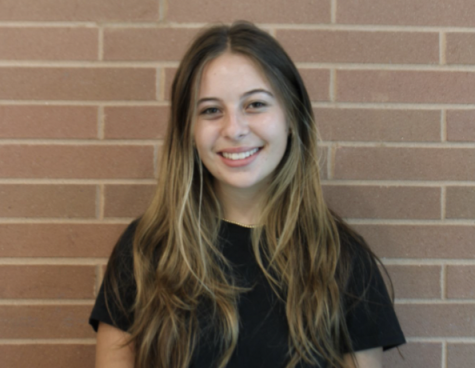
Public Relations Director Chloe Murray ’22 enjoys her life as a twin and an aspiring journalist.
“We’re super close and we’re very similar people,”...


